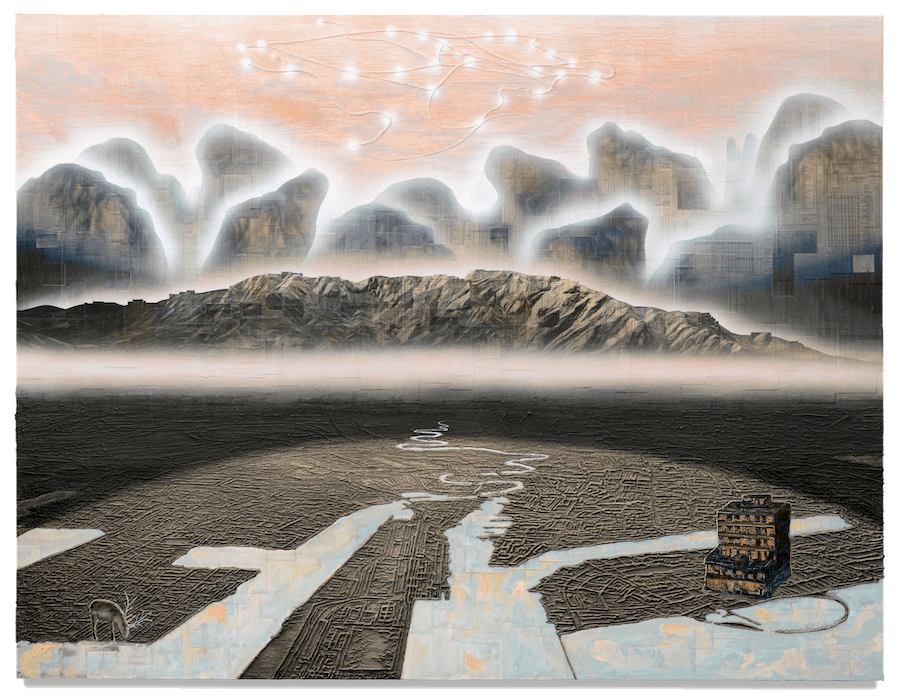23 January 2020 Gordon Cheung’s landscapes are vast. Massive craggy mountains dominate the skyline, mega cities consume the plains, great swathes of ocean bite into the coastline. There are representations of giant bridges, world-conquering shipping routes, recordbreaking railways and passages of superhighway.

Cheung, a British-Chinese artist, borrows from sci-fi and computerised imagery. The five paintings in this show started life as collaged squares of the Financial Times, layered up to create a pixelated effect. Even the one sculptural installation here, a series of hanging papier mâché frames recreating traditional Chinese window lattices, looks disconcertingly like the early 2000s Windows logo or multiple apps open on a desktop.
There’s nothing futuristic about Cheung’s images, every single reference point is drawn from contemporary China or its history. The plans for a supersized city that’s bigger than the whole of Britain is real. So is the monumental One Belt One Road trade route forming links with the rest of Asia and Europe. And so are those camps.
But Cheung’s works are closer to large-scale documentary projects than scathing criticism. They’re also surprisingly beautiful, with areas of pearly green and black like the iridescence of a cayuga duck, or bits of hyped-up pink bursting out of an opium poppy.
In a way, these are the modern-day equivalent of Caspar David Friedrich’s sweeping, sublime-seeking landscapes of the nineteenth century. Only instead of causing shock and awe through nature, Cheung does it via the human additions to a landscape. It’s impressive – and it’s also bloody terrifying.


